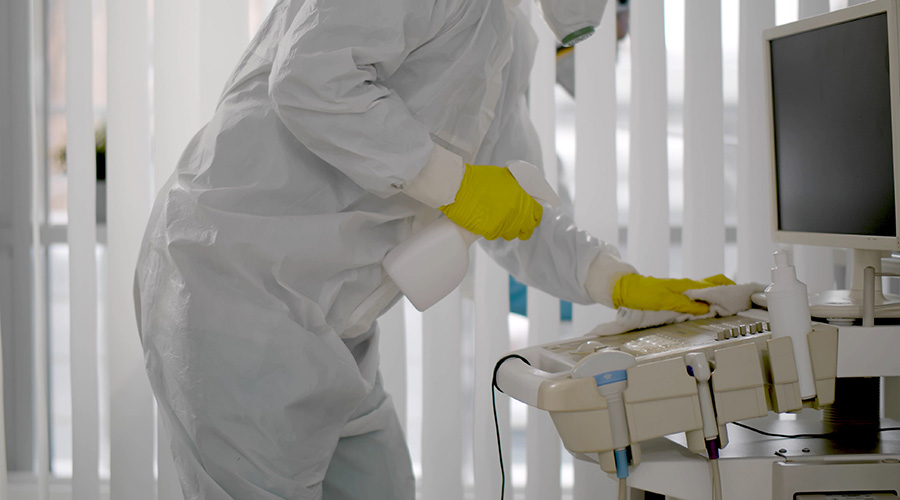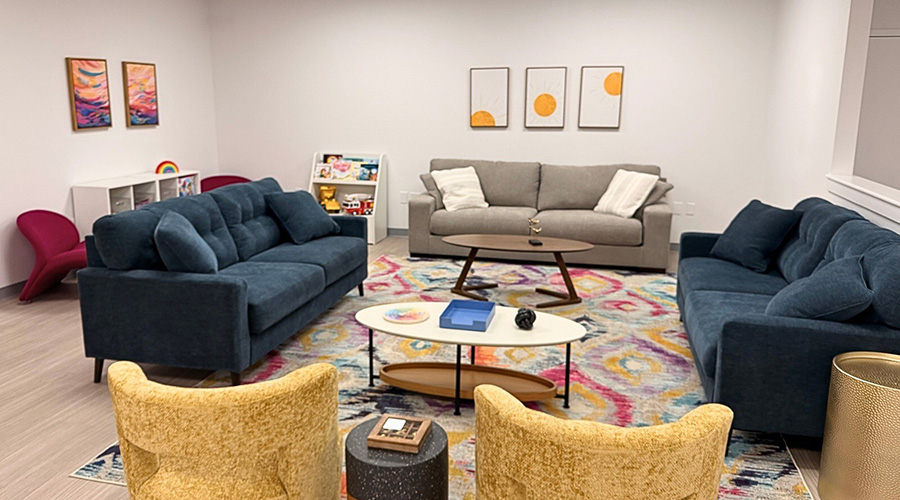In a recent Q&A with Healthcare Facilities Today, Dan Thomas, AIA, ACHA, EDAC, and Vice President at CallisonRTKL, spoke about the role of healthcare design in patient care
Q: Which issues are critical in designing therapeutic and safe behavioral health environments?
Dan Thomas: Safety is always the number one priority. We need to create an environment that prevents self-harm and harm to others. This includes ligature-resistant fixtures and constant patient visibility. By evaluating spaces on a five-level risk assessment, ranging from low risk to extreme risk as it relates to patient safety, we can understand where patient and staff safety could be threatened.
When designing behavioral health facilities, it is also essential to understand the needs of the patients and their families. From the moment they set foot in a facility, we must map out their experience and create an environment that supports their physical and emotional wellbeing. By providing natural light and incorporating colors and materials from nature, we can create a calming environment. Furniture is equally as important. We must stay away from “institutional” furniture-like desks and chairs, because a classroom-like or office-like setting could be triggering for someone. We need these spaces to be as home-like and comforting as possible. This allows the patients to have the best environment to heal in and for family and staff to feel supported throughout the process.
Q: How do the critical issues affect overall design?
DT: As mentioned, safety is always our number one priority, and every design decision is made with this in mind. The first critical issue is visibility. As soon a patient is out of view from a staff member, they pose a potential risk to themselves or others. In most facilities, a patient will spend a majority of their time in communal activity rooms rather than their own private room. By creating open floor plans, staff can easily view patients and ensure everyone’s safety. Fixtures and furniture are also carefully selected to make certain they can not cause any harm. It is also important for us to consider restricted areas for staff. These private, locked spaces can hinder an open floor plan, so designers must carefully lay out the facility to guarantee the patients and staff have the necessary space.
Q: What are some of the unique needs of behavioral health patients and how does design help support these needs?
DT: Patients come to these types of facilities needing help. When they first arrive, the process can be extremely demoralizing since they are losing all of their belongings and, to an extent, a sense of self. By designing small spaces where they can be alone to de-escalate or change clothes in private, they can retain a sense of normalcy and comfort. We have implemented respite rooms for staff, patients, and families to use. These rooms provide a low sensory environment with color therapy options. With a high stress event like entering a behavioral health facility, everyone involved may need a space to physically, mentally, and emotionally relax. These respite rooms let the people involved know they are in a safe space, and that it is okay to remove themselves from the situation temporarily.
Q: When entering a behavioral health facility, how can design assist patients and families in making the screening process easier?
DT: When we design a behavioral health facility, we go through a “Day in the Life” scenario. We walk through the space to understand every step of the process and what everyone involved will experience. From there, we can better understand the high stress points, the safety concerns, and the emotions the physical environment evokes. We make spaces as de-institutional as possible by including natural light, materials, and colors. As soon as the patients feel a sense of normalcy in their life, they can begin to heal. Home-like settings create the most normal setting for this recovery.
Q: Can you explain more about what it means to create “human-centered” design?
Human-centered design is understanding how design impacts the safety, wellbeing, and health of a person—a human being. Behavioral health facilities involve three groups of people: patients, families, and staff. With each group’s unique needs in mind, we can create positive environments for all. We begin the design process by identifying these human needs, and then we create environments that support them.
The patients need a non-institutional setting that is calm and safe. Creating this atmosphere assists in the healing process. Families need to understand their loved one is safe and taken care of. They can be part of the recovery process to an extent, so some barriers do need to be in place to ensure the healing process can happen in the best manner. Just like patients, staff also need a calming environment to relax during a stressful day. Their wellbeing is just as important as the patients’ because, without them, the patients would not be receiving the care they need.
Q: What design elements do you include to ensure a facility has a comforting feeling rather than a sterile, institutionalized aesthetic?
DT: Access to nature and natural elements has been proven to reduce heart rates and lower anxiety. Access to windows that provide natural light and landscape views improve the overall wellbeing of patients and staff and can accelerate the healing process. Where there is no window access, we have implemented changing light fixtures that can mimic natural light and circadian rhythms. This helps to regulate the body and get it on a normal sleep cycle. The body does a majority of its healing when we sleep. By getting people on a normal sleep cycle, people can recover more quickly.
With nature in mind, we use materials and images that resemble natural elements such as blues and greens and landscape paintings. We make sure to not use reds, yellows, or whites, as these are very harsh, non-natural colors that do not promote a calming environment.
Q: How has creating a home-like setting shown to help patients’ recovery?
DT:A home-like setting is an easy transition from the outside world. By creating a sense of normalcy, patients are more likely to develop routines. Recovery is all about finding a healthy medication routine and sticking with it. By removing an institutional feeling, patients are more likely to develop these habits and stick with them long-term.
We have also implemented gardens into spaces like senior living behavioral health facilities. Allowing patients to garden has proven to reduce stress and aid in recovery. This “normal” activity allows for the patients to gain a part of their life back and not feel like they are being forced into care they may not want.
Q: What design elements are implemented to support the patients’ families? What about caregivers?
DT: Families are often in crisis mode when they bring a loved one to a behavioral health facility. They are physically and mentally drained and are desperate for professional help. We create respite rooms specifically for them that give them permission to just breathe.
The staff at behavioral health facilities are extremely special people who have devoted their lives to helping others. They are faced with highly stressful situations every day, and it is important to understand that their wellbeing is just as important as the patients’. By creating quiet spaces on-site, a staff member can remove themself and take a few minutes to be alone, relax, and recharge.
We design rooms geared towards patients’ support systems to allow the user complete control of lighting, temperature, furniture, and refreshments. This makes it easy for families and staff to create their most comfortable environment needed to reset.

 Why Identity Governance Is Becoming a Facilities Management Issue
Why Identity Governance Is Becoming a Facilities Management Issue Habitat Health Opens South Los Angeles PACE Center
Habitat Health Opens South Los Angeles PACE Center Denton County MHMR Center Suffers a Data Breach
Denton County MHMR Center Suffers a Data Breach What Every EVS Leader Needs To Know
What Every EVS Leader Needs To Know Blackbird Health Opens New Clinic in New Jersey
Blackbird Health Opens New Clinic in New Jersey